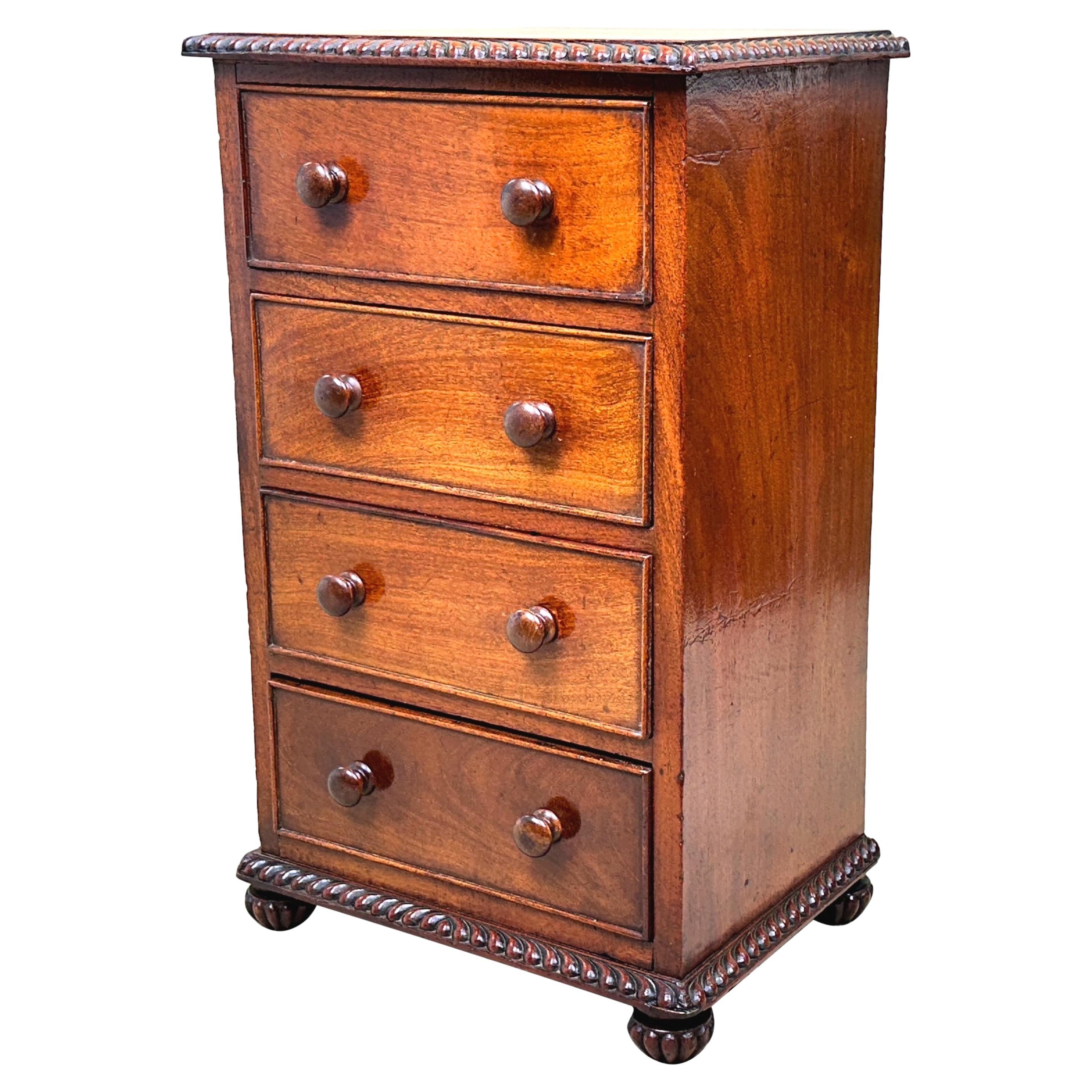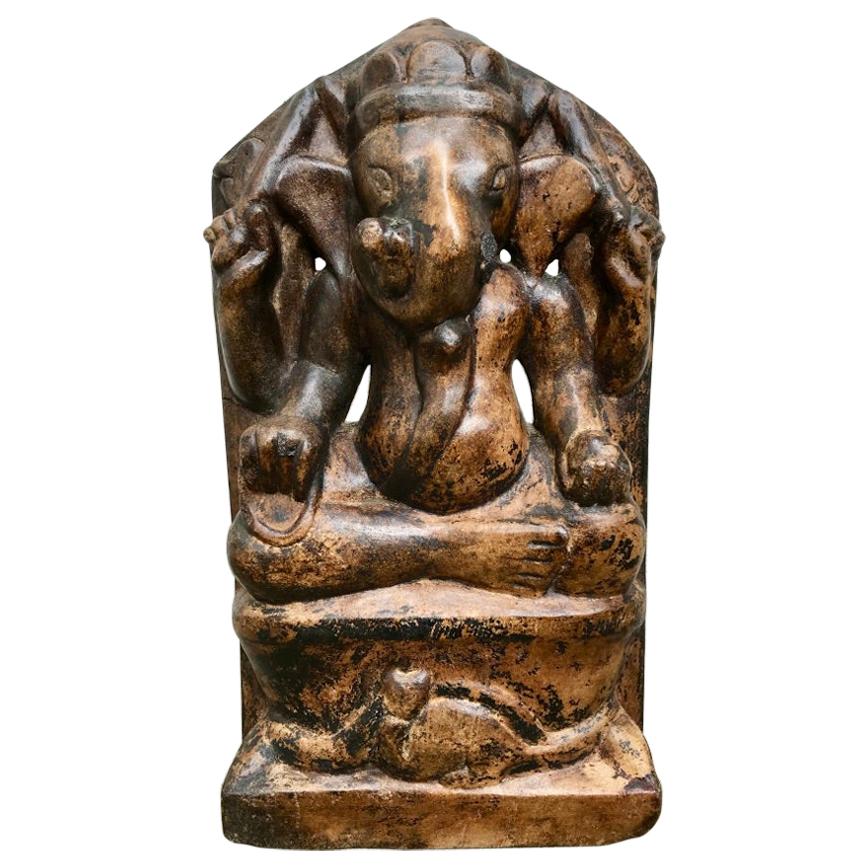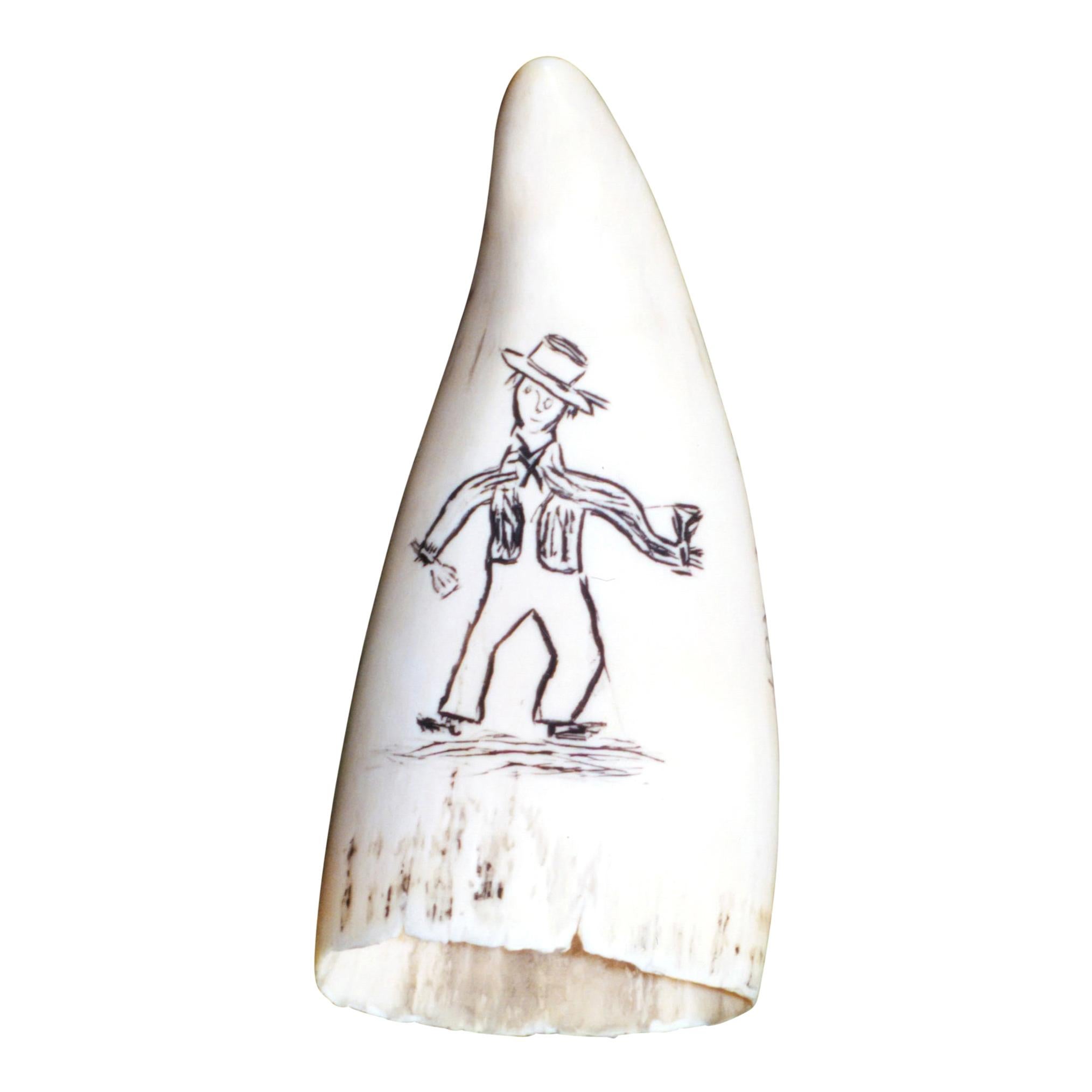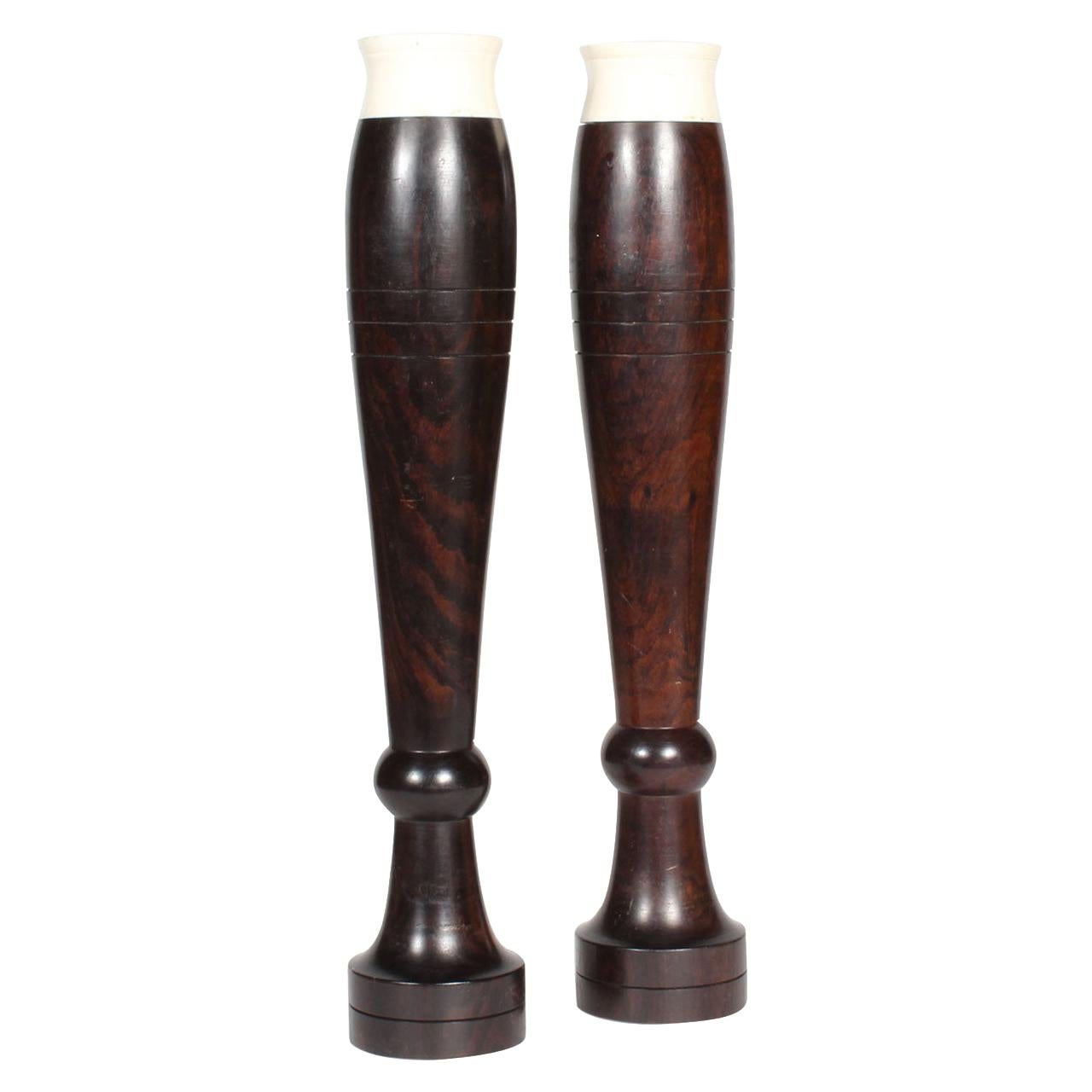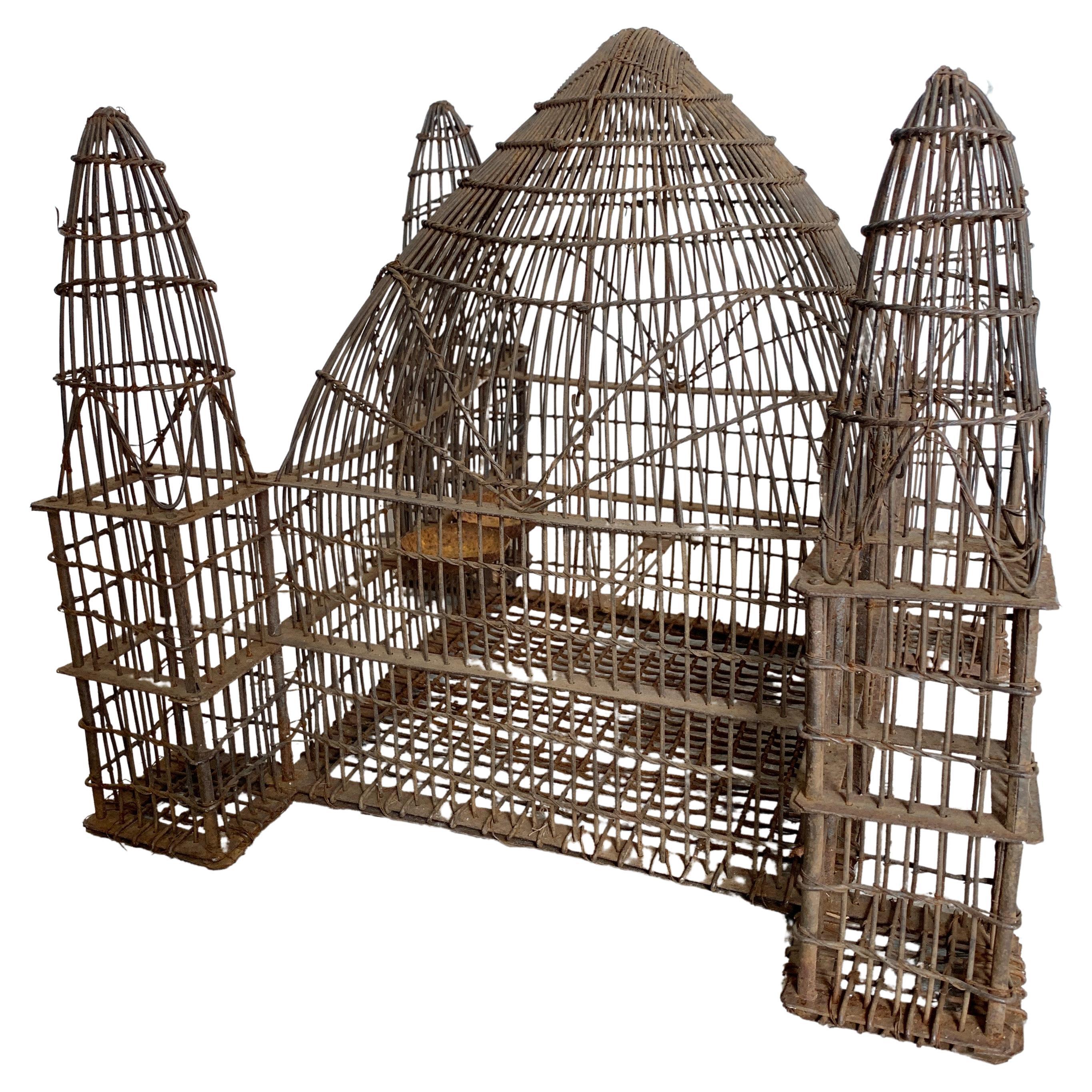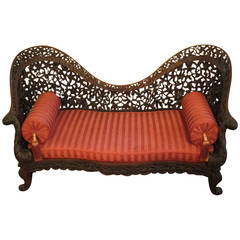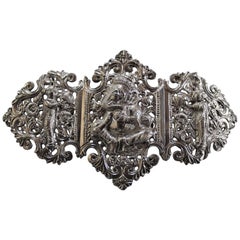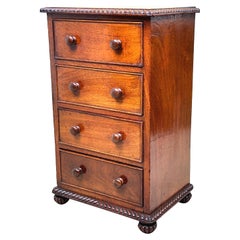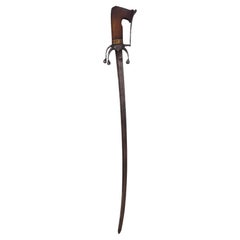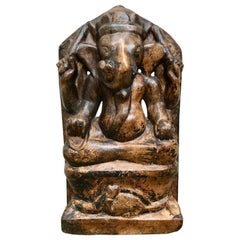
Pair of Early 19th Century Anglo-Indian Swords by Read of Dublin, Ireland
View Similar Items
Want more images or videos?
Request additional images or videos from the seller
1 of 17
Pair of Early 19th Century Anglo-Indian Swords by Read of Dublin, Ireland
About the Item
- Creator:Thomas Read (Maker)
- Dimensions:Height: 36 in (91.44 cm)Width: 5.5 in (13.97 cm)Depth: 1.5 in (3.81 cm)
- Sold As:Set of 2
- Style:Anglo-Indian (Of the Period)
- Materials and Techniques:
- Place of Origin:Ireland, Republic of
- Period:
- Date of Manufacture:circa 1800
- Condition:Wear consistent with age and use. These swords show some signs of wear most notably to the steel blades which have some tarnish. The gold gilding and etching on the blades have loses in some spots more than others.
- Seller Location:Hamilton, CA
- Reference Number:1stDibs: LU1355213758972
About the Seller
5.0
Platinum Seller
These expertly vetted sellers are 1stDibs' most experienced sellers and are rated highest by our customers.
Established in 2010
1stDibs seller since 2015
1,218 sales on 1stDibs
More From This SellerView All
- Anglo Indian Settee, Late 18th or Early 19th Century Carved RosewoodLocated in Hamilton, OntarioHand-carved rosewood, late 18th century or early 19th century. Free shipping within the United States and Canada.Category
Antique Late 18th Century Indian Anglo-Indian Settees
$19,995 Sale Price55% Off - Early 19th Century Hand Coloured Map of North America by Aaron ArrowsmithBy Aaron ArrowsmithLocated in Hamilton, OntarioHand coloured map in French by English cartographer Aaron Arrowsmith (1750–1823) titled "Amerique Septentionale" (North America). Map size: 9.5" x 8" Mat size: 20.5" x 14.25".Category
Antique Early 19th Century English Maps
MaterialsPaper
$795 Sale Price36% Off - Anglo-Indian Silver Belt Buckle with Red and Black BeltsLocated in Hamilton, OntarioThis is a highly ornate and decorative old Anglo-Indian silver belt buckle with red and black ribbon belts. It dates to the early 20th centu...Category
Early 20th Century Indian Anglo-Indian Collectible Jewelry
MaterialsSilver
$795 Sale Price36% Off - 19th Century, Irish Marine Botany Specimens Made for the Niagara Falls MuseumLocated in Hamilton, Ontario19th century Irish Marine Botany Specimens made for Thomas Barnett of the Niagara Falls Museum. Seaweed samples were collected off the West Coast of Ireland in 1871 by Mrs. Maria J.W. Kirkwood and presented to Thomas Barnett Esquire, proprietor of the Niagara Falls Museum. These come as two separately framed pieces with hand embroidered lettering surrounded by seaweed and a poem written by Victoria Hall. Free shipping within the United States and Canada. The Niagara Falls Museum was a museum most notable for being the oldest Canadian museum (1827), as well as for having housed the mummy of Ramesses I for 140 years before its return to Egypt in 2003. It was founded by Thomas Barnett of Birmingham, England and underwent a few vocational changes in its history. More on Thomas Barnett and the Niagara Falls Museum. Thomas Barnett was born on December the 4th, 1799 near Birmingham, England. He moved to Canada in the early 1820s and opened the Niagara Falls Museum in 1827 at the base of the Canadian Horseshoe Falls. Barnett had a passion for collecting oddities. He retrofitted a former brewery house to exhibit his private collection. Although Barnett was aware of the collection patterns of his North American contemporaries, his own approach bore an uncanny similarity to the British tradition, such as the Ashmolean Museum in Oxford, the first traditional museum in Britain. The Niagara Falls Museum had humble beginnings. In 1827, the first museum contained Thomas Barnett's own cabinet of taxidermic curiosities. Although the details were not documented, the collection was likely composed of a number of mounted animals of local origin, combined with a smattering of Native American artifacts. Barnett's collection however rapidly grew. Prior to 1844, an account of the museum's contents stated that there were over 5000 items, including bipeds, quadrupeds, birds, fish, insects, reptiles, shells, minerals, and Native American curiosities. Through the first fifty years of its existence, the Niagara Falls Museum continued to acquire similar artifacts through the diligent efforts of the Barnett family and their associates. In 1854, Sydney Barnett (son of Thomas Barnett) made the first of his three trips to Egypt (two by himself and one with Dr. J. Douglas of Montreal) and purchased four mummies as well as a host of other Egyptian antiquities. In 1857, mastodon remains were discovered in St. Thomas, Ontario and later placed in the museum. In 1859 an inventory of the museum's contents included, in addition to the previously mentioned artifacts, an egg collection...Category
Antique 19th Century Decorative Art
$3,250 Sale Price / set27% Off - Early 19th Century Hand Colored Map of the United States and Caribbean IslandsLocated in Hamilton, OntarioHand coloured early 19th century map by Giraldon of France titled "Etats Unis et Grandes Antilles" (United States and Greater Antilles).Category
Antique Early 19th Century French Maps
MaterialsPaper
$595 Sale Price40% Off - 19th Century African Shona DaggerLocated in Hamilton, Ontario19th Century dagger from the Shona people of Zimbabwe. It features beautiful carvings, a rich aged patina and a handmade steeped blade.Category
Antique 1890s Zimbabwean Arms, Armor and Weapons
MaterialsMetal
You May Also Like
- Early 19th Century Anglo-Indian Childs Chest Of DrawersLocated in Bedfordshire, GBAn Attractive And Very Good Quality Anglo-Indian, 19th Century, Padouk Wood Childs Chest, Having Well Figured Rectangular Top With Gadrooned Carving To Edge, Over Four Drawers, Retai...Category
Antique Early 19th Century Indian Anglo-Indian Children's Furniture
MaterialsPadouk
- North African Sword (Nimcha), Morocco, Early 19th CenturyLocated in Madrid, ESNorth African Sword (Nimcha), Morocco, Early 19th Century This North African sword, known as a "Nimcha," is a remarkable piece originating from Morocco, dating back to the early 19th...Category
Antique Late 19th Century Arms, Armor and Weapons
MaterialsWrought Iron
$1,029 Sale Price20% Off - 19th Century Indian Marble Carving of Ganesha, Remover of ObstaclesLocated in Stamford, CTMarble carving of the elephant headed four armed Hindu God Ganesha. With traces of old paint, it now has a rich honey patina from years of devotees touching the surface. Shown seated...Category
Antique Late 19th Century Indian Anglo-Indian Sculptures and Carvings
MaterialsMarble
- Early 19th Century Pair of Lead Putti FiguresLocated in London, GBEarly 19th century pair of lead putti figures A charming matched pair of hand-crafted early 19th century lead putti figures. Size in inches: H 10” x...Category
Antique Early 19th Century Unknown Figurative Sculptures
MaterialsLead
- 18th Century Anglo-Indian Spice CabinetLocated in San Francisco, CAAn 18th century Anglo-Indian hardwood multi drawer small apothecary or spice cabinet.Category
Antique 18th Century Indian Cabinets
MaterialsHardwood
- Micromosaic of Shepherd, Early 19th CenturyLocated in Paris, FRRectangular micromosaic plate featuring a shepherd, seated and resting with his dog at his feet. The shepherd is wearing a woolen cloak over his colorful clothes. He is holding a hat in his left hand and his staff in his right. A wicker basket at his feet is filled with a bouquet of flowers and a bunch of grapes. This pastoral theme is characteristic of the micromosaic production of Gioacchino...Category
Antique 1820s French Restauration Models and Miniatures
MaterialsStone
